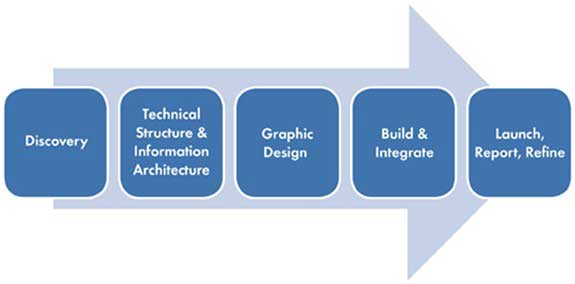One of the traps that many organizations fall into when launching a new Web initiative is putting the focus of the project on new technology or new functionality.
Often clients will come to us and say "our website needs video" or "we need to start blogging" or "let's put together an email campaign."
To which we respond, Why? Are you trying to generate leads/sales? Do you want to provide information for educational purposes? Are you promoting an event? Do you want to grow your membership/contact list?
And, How many people do you need to reach to make the project worth your time and budget?
The Expensive Way: Throw It Against the Wall and See if It Sticks!
Regardless of what you are doing with the new technology—building a website, developing a mobile application, creating a social-media campaign, or launching an email campaign—you have to start with the end result.
You can't be successful if you don't have a benchmark against which to measure results. Not only do you need to build your communication tool, but you also need a strategy for getting your content in front of your target audience and for driving action from the user.
- If you post a video about the world's greatest product and no one sees it, how many people will buy the product?
- What if everyone sees the video, but there are no instructions on how to buy the product?
- What if the video quality is poor and it puts a negative impression of your overall brand in the mind of a potential customer?
All those questions should be answered in the planning process. The outline below takes you through some project phases that you need to include when launching any Web campaign.
The Process

Discovery
You outline the project's goals, the strategy for successfully reaching your target audience, the campaign's key messages, the channels via which the message will be delivered, the timeline for each channel launch, the call to action, and the reporting process.
Technical structure and information architecture
You lay out the technology being used in the campaign, the connections to and from any business systems, the end-user experience, and the priority of your content.
Graphic design
Another trap to be aware of in Web-campaign development is designing before planning. You have to complete the information architecture so that you appropriately prioritize your primary content over your secondary and lower-level messages.
When you do get to the design phase, image and branding are extremely important components. If your audience doesn't get an appropriate impression of your product, service, or brand in the split second they glance at your email or page, they won't bother to get into the content detail.
Web design requires a specific skill set. Be sure that you work with designers who specialize in online media. Do not assume that your print materials will translate seamlessly to a Web-design project.
Build and integrate
Start programming only after everything is laid out in function and design. That helps reduce your programming time, cost, and testing cycles significantly.
Launch, report, refine
The launch is not a finishing point; rather, it's a starting point. It's where you execute the plan, manage the program, and report on the results. Most of the time, the launch consists of ongoing adjustments to content and functionality based on the results that you are generating from the campaign.
* * *
By following an organized process and ensuring you have the right personnel to manage each phase in the process, you will give your organization a much higher chance of success and avoid some common mistakes—or you can keep throwing things against the wall.



